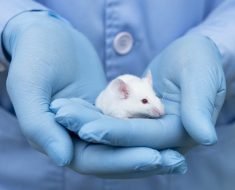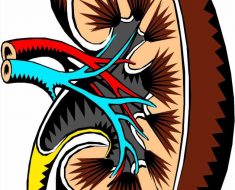Chronic obstructive pulmonary disease (COPD) is one of the commonest lung disorders seen in smokers. The condition usually takes years to progress and develop so as to manifest symptoms.
COPD is characterized by progressive worsening of cough and breathlessness among middle aged smokers. These patients have recurrent and frequent exacerbations brought about often by bouts of infections of the respiratory tract.
Usually the condition is seen in persons over the age of 35.
Age of onset of COPD symptoms
This condition usually manifests in individuals over 35 years of age. Rare conditions like alpha 1 antitrypsin deficiency may bring about COPD symptoms early. Alpha 1 antitrypsin is a protein that protects the lungs. In its absence, as seen rarely in some genetically susceptible individuals, there is risk of COPD. COPD in non-smokers below 35 is an indication towards alpha 1 antitrypsin deficiency.
Gender and risk of COPD
Risk of COPD is closely associated with smoking status. However, female smokers are nearly 13 times as likely to die from COPD as women who have never smoked.
On the other hand male smokers are nearly 12 times as likely to die from COPD as males who have never smoked.
Symptoms of COPD
Outline of symptoms seen commonly with COPD include:-
- There is increasing and worsening breathlessness when exercising or moving around. With the progression of the disease, even daily activities may bring on an exacerbation. One of the primary symptoms of COPD is breathlessness. The Medical Research Council (MRC) dyspnoea scale is commonly used to grade the breathlessness according to the level of exertion that is needed to elicit the breathlessness.
- A persistent cough with phlegm or sputum. This begins as mild smoker’s cough initially and progresses to a persistent and annoying cough.
- Regular, recurrent and frequent chest infections, particularly in winter months.
- Wheezing.
- At least two or more flare-ups or exacerbations a year. Definition of COPD states at least one exacerbation a year for two consecutive years. During this time the symptoms may be worse.
- Weight loss that is unexplained.
- Tiredness and fatigue due to lack of adequate oxygenation and nutrition.
- Repeated waking at night due to breathlessness.
- Swelling of ankles.
- Chest pain – this is an uncommon symptom and is seen in patients who have a co-existing heart condition like angina.
- Coughing up blood – this is also a rare symptom with COPD. This symptom may indicate a deeper pathology like lung cancer.
Sources
- www.nhs.uk/…/Symptoms.aspx
- http://www.bcguidelines.ca/pdf/copd.pdf
- http://www.nice.org.uk/nicemedia/live/13029/49401/49401.pdf
- www.lung.org/assets/documents/publications/solddc-chapters/copd.pdf
- http://www.who.int/respiratory/copd/GOLD_WR_06.pdf
- http://www.nice.org.uk/nicemedia/live/13029/49397/49397.pdf
- http://www.nlm.nih.gov/medlineplus/tutorials/copd/id139104.pdf
Further Reading
- All Chronic Obstructive Pulmonary Disease Content
- What is Chronic Obstructive Pulmonary Disease?
- Chronic Obstructive Pulmonary Disease Causes
- Chronic Obstructive Pulmonary Disease Process
- Chronic Obstructive Pulmonary Disease Management
Last Updated: Feb 26, 2019

Written by
Dr. Ananya Mandal
Dr. Ananya Mandal is a doctor by profession, lecturer by vocation and a medical writer by passion. She specialized in Clinical Pharmacology after her bachelor's (MBBS). For her, health communication is not just writing complicated reviews for professionals but making medical knowledge understandable and available to the general public as well.
Source: Read Full Article





